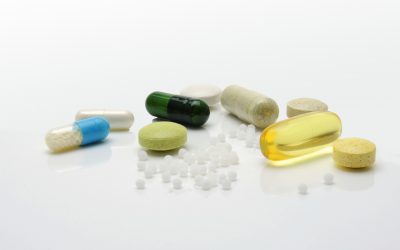Estrogen Dominance: Are Your Hormones Imbalanced?
Does This Sound Like You?
Do you routinely experience breast distension, headaches, or irritability before your period? Do you have fibrocystic breasts, endometriosis, or fibroids? Have you gone to the doctor only to be told that it’s normal to experience PMS and that it’s nothing to worry about? If this sounds like you, you may be dealing with estrogen dominance.
What Is Estrogen Dominance?
Estrogen Dominance is a term used to explain a type of hormonal imbalance characterized by heightened estrogen levels in relation to progesterone. An estrogen dominance occurs in two forms:
- Estrogen levels are elevated, while progesterone is in a healthy range
- Estrogen levels are in a healthy range, while progesterone levels are decreased
In both scenarios, there is a relative excess of estrogen compared to progesterone. Why do we care about this? We care because estrogen dominance is often the underlying explanation for Many symptoms we ladies experience each month. Not only does it cause monthly grievances, but there are long-term consequences of being estrogen dominant. Estrogen dominance is one of the MOST common hormonal imbalances I see. Even more concerning, it appears that more and more of us are suffering from an estrogen dominant state.
What are the Signs and Symptoms of Estrogen Dominance?
Unsure if you’re dealing with estrogen dominance? Here are the most common signs and symptoms to look out for:
- Anxiety
- Breast tenderness and/or distension
- Fibrocystic breasts
- Cyclical headaches or migraines
- Irregular periods
- Bloating and water retention
- Fibroids
- Endometriosis
- Irritability
- Recurrent vaginal yeast infections
- Recurrent UTIs
- Acne
- Decreased sex drive
- Weight gain
- Brain fog
- Allergies
Why Does Estrogen Dominance Happen?
Estrogen dominance appears to be a growing problem and there are a number of reasons for this.
- For one, we are increasingly being exposed to xenoestrogens in our environment. These environmental and household pollutants chemically resemble estrogens in the body and are known endocrine disruptors. Our body isn’t advanced enough to distinguish naturally produced and synthetic estrogens in our body, leading to estrogen dominance.
- To that end, much of the food we eat is sprayed with pesticides, another xenoestrogen. Animal products are no better and are also a significant source of endocrine disrupting chemicals.
Increased alcohol consumption can also lead to elevated estrogen. Several studies have found a link between alcohol consumption and increased estrogen in the body. - Our North American lives have become increasingly more stressful. With high-stress levels our progesterone plummets, leaving us in a state of relative estrogen excess.
- Gut health is on the decline. This is largely due to dysbiosis in the gut, AKA we don’t have enough good bacteria and too much bad bacteria in our gut. This occurs due to excessive sanitation, poor dietary choices, and overuse of antibiotics. Good bacteria are NEEDED to properly metabolize estrogen. When we lack good bacteria, estrogen isn’t metabolized and therefore increases in the body. Stay tuned for our blog on the gut-hormone connection coming soon.
- Birth control is being prescribed more than ever before. Long-term use of birth control increases our exposure to synthetic estrogens.
- Anovulatory hormonal conditions such as PCOS also lead to estrogen dominance. Diagnosis of PCOS is also on the rise, possibly due to the increased endocrine-disrupting chemicals found in our environment.
- Lastly, an unhealthy body mass index (BMI) may contribute to elevated estrogen. Estrogen is stored and secreted by fat cells, therefore the more fat cells we have, the more estrogen we produce.
What Are the Long-Term Risks of Estrogen Dominance?
The biggest long-term risk of estrogen dominance is the development of hormonal cancers such as breast, ovarian, and endometrial cancers. In particular, a relationship between high estrogen levels and breast cancer has been well-established.
Another long-term consequence of estrogen dominance includes autoimmunity, and in particular the development of hypothyroidism.
Lesser discussed long-term consequences include infertility, heart disease, and decreased cognitive function.
How Can I Get Estrogen Dominance Diagnosed?
If you think you might be suffering from estrogen dominance, it’s important to get testing done. I find that the most comprehensive testing to detect estrogen dominance is a urinary hormone panel. Even if you feel certain you have an estrogen dominant state on your hands, it’s important to obtain testing in order to understand WHY this is happening, and HOW to most effectively treat it! As mentioned above, estrogen dominance occurs when there is either high estrogen or low progesterone. The treatments for these two estrogen dominant types are VERY different.
What Can I Do To Treat Estrogen Dominance?
- First things first, get back to basics! Eat a clean diet, buy organic produce, and steer clear of heavily sprayed food products. For help with your diet, check out our Optimal Fertility Diet and Optimal Fertility Diet Common Mistakes to learn more.
- Get moving! Exercise is important for proper lymphatic and circulatory flow in the body. We need good lymphatic flow to help eliminate the xenoestrogens we’re being exposed to on a daily basis.
- Engage in some stress relief strategies. Whether this is meditating, taking a bath, or watching your favorite TV show, do it! Take time to unwind each day and focus on your own well-being.
- Assess your environmental exposure and toxic load! For more information on xenoestrogens and how to avoid them, click here.
There are many natural supplements and herbs available that are excellent at metabolizing estrogens and restoring hormonal balance. Be sure to see a qualified practitioner to learn which natural health products are most indicated for you. - Do your gut a favour and start taking a good probiotic. As mentioned above, good bacteria are needed to properly metabolize estrogen. Any multi-strain probiotic is good to start. However in some cases probiotics can cause other symptoms for some people with specific digestive issues, so it’s always best to see a qualified health care practitioner before starting any supplement.
- Engage in some gentle liver support. Your liver is your main detoxifying organ in the body, and this includes detoxifying excess hormones. Start your day off with warm lemon water.
- Get some acupuncture done to promote the smooth flow of Liver Qi. PMS symptoms in Traditional Chinese Medicine are associated with the liver meridian, so showing your liver some love through acupuncture can help get things moving!
Need help balancing your hormones?
If you think you have a hormonal imbalance, and/or are suffering from estrogen dominance, I am here and happy to help!
With love and in health,
Priya
References
- https://www.tdinj.com/articles/health-healing/Estrogen-Dominance.pdf
- http://ndnr.com/womens-health/estrogen-dominance-excess-dietary-and-tcm-approaches-to-hormone-balance/
- https://www.naturopathic.org/content.asp?contentid=401
- https://www.ncbi.nlm.nih.gov/pubmed/10397281
- https://www.ncbi.nlm.nih.gov/pmc/articles/PMC3113168/
I want to help you get there. The key to your fertility lies within you.
Let's Awaken it!
More Reading
Naturopathic Medicine in Fertility
Whether you are just starting to try to get pregnant, struggling with getting pregnant or suffering from recurrent miscarriages, a fertility naturopathic doctor can help you along your fertility journey. Naturopathic doctors are trained healthcare professionals with...
The Role of Melatonin in Fertility
Most of us have heard about melatonin in the context of sleep, as a supplement that can impact our circadian rhythm. However, this hormone also plays an important role in female fertility. What is Melatonin? Melatonin is a hormone made by the pineal gland in...
Simple Tips to Improve Your Chances of Conceiving
It’s easy to get caught up in the minor details of what we could be doing better when trying to get pregnant. This can lead to constant thoughts around the effects that our daily activities have on our chances. This self-criticism can feel overwhelming and...




Share This
Share this post with your friends!